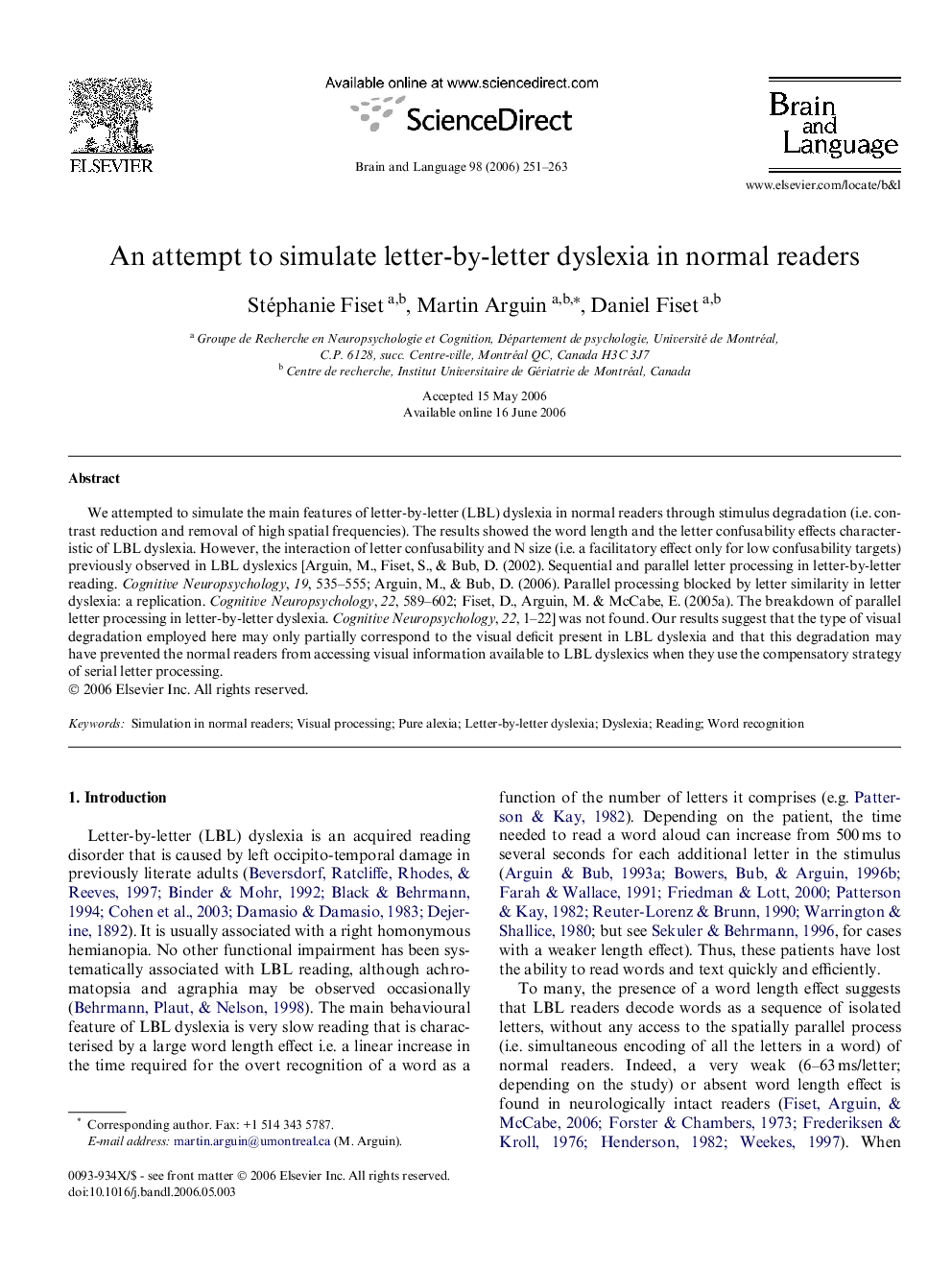| Article ID | Journal | Published Year | Pages | File Type |
|---|---|---|---|---|
| 926032 | Brain and Language | 2006 | 13 Pages |
We attempted to simulate the main features of letter-by-letter (LBL) dyslexia in normal readers through stimulus degradation (i.e. contrast reduction and removal of high spatial frequencies). The results showed the word length and the letter confusability effects characteristic of LBL dyslexia. However, the interaction of letter confusability and N size (i.e. a facilitatory effect only for low confusability targets) previously observed in LBL dyslexics [Arguin, M., Fiset, S., & Bub, D. (2002). Sequential and parallel letter processing in letter-by-letter reading. Cognitive Neuropsychology, 19, 535–555; Arguin, M., & Bub, D. (2006). Parallel processing blocked by letter similarity in letter dyslexia: a replication. Cognitive Neuropsychology, 22, 589–602; Fiset, D., Arguin, M. & McCabe, E. (2005a). The breakdown of parallel letter processing in letter-by-letter dyslexia. Cognitive Neuropsychology, 22, 1–22] was not found. Our results suggest that the type of visual degradation employed here may only partially correspond to the visual deficit present in LBL dyslexia and that this degradation may have prevented the normal readers from accessing visual information available to LBL dyslexics when they use the compensatory strategy of serial letter processing.
